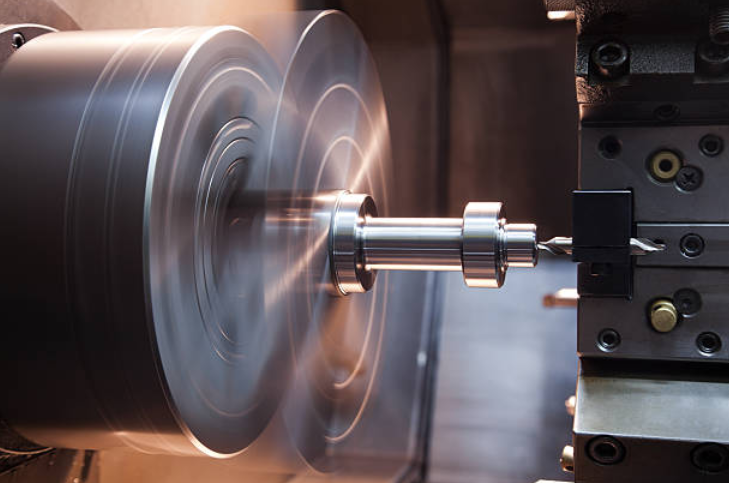As modern products get more intricate, picking the right machining technique hinges on part shape above almost anything else. In sectors, from aerospace and cars to robots and medical devices, folks expect tight tolerances, repeatable quality, and fast turnarounds. Because of those demands, CNC turning has earned a clear reputation for efficiently producing accurate round or near-round components.
Yet this strength raises a question: how well does CNC turning stack up when parts lose their simple symmetry? To answer, the piece will compare it with other methods and highlight how high precision CNC machining services are steering tomorrow’s factories.
Understanding CNC Turning and Its Role in Precision Fabrication
CNC turning is a subtractive process where a stationary cutting tool pares away material from a workpiece that spins at high speed. Carried out on a computer-controlled lathe, the technique suits countless everyday parts-shafts, bushings, threaded fittings, and small pins.
CNC turning delivers tight tolerances, smooth finishes and steady size control across every batch. Tool movement is limited to the X and Z axes, so the cutter rides along the part as it spins in the chuck. When used alongside high-precision CNC machining services, turning meets the strict norms of aerospace, medical and other quality-first sectors.
Many shops now add live tooling and a Y-axis, letting the lathe mill, drill and groove complex shapes without a second setup.
CNC Turning vs CNC Milling: Which Is More Versatile?
While both processes sit under the banner of computer-controlled machining, their motions-and therefore their uses-are quite different. In turning, the workpiece spins and the tool mostly slides along the X and Z paths; in milling, a rotating cutter moves across a fixed or occasionally shifting part.
Turning shines on high-volume runs of round, roughly symmetrical components. Cycle times are faster, tool wear is lower, and scrap rates drop thanks to minimal stock removal. Milling stays ahead whenever a project needs flat faces, deep pockets or intricate 3D features that simply cannot be coaxed from radial motion.
Say you have a job that calls for thousands of small metal pins or threaded connectors: in that case, CNC turning keeps the bills low while delivering speed. On the flip side, if the order includes awkward mounting brackets covered with angled faces and overlapping holes, CNC milling steps in as the more capable option.
Both methods can hit surprisingly tight tolerances, though. Pick one over the other based on part shape and whether the job needs a rotating workpiece or the all-around reach provided by cutter-moves on several axes at once.
How CNC Turning Compares with 5-Axis Machining
Five-axis machining has really changed the game for parts that are both intricate and expensive to make. Because the cutter can angle itself toward the work from almost any side, the shop can finish a complicated shape in one or two set-ups, which boosts accuracy.
Of course, that flexibility does not come cheap. Tool-path programming is tricky, and operators often spend extra hours dialling in setups. For low-volume jobs like jet-engine blades or custom implants for the operating room, those costs make sense.
CNC turning, in contrast, delivers speed and savings on pieces that are round or nearly round. When paired with high-precision CNC machining tricks like automatic bar feeders and multi-spindle rigs, it nails repeatability while keeping the line moving.
Although 5-axis mills can handle almost any shape, CNC lathes stay faster and cheaper on uniform, rounded parts, giving shops a clear cost edge when symmetry rules.
EDM, short for electrical discharge machining, uses tiny arcs to eat away metal, letting it cut sharp corners or delicate slots that regular tools would crush.
That precision comes at a price, though. EDM runs slowly, only works on conductive materials, and usually shows up in die shops or firms building complex mold cavities.
For these reasons, turning and EDM rarely clash. They fit together neatly: a lathe first roughs the blank, saving time by knocking off the bulk of the mass, then EDM steps in to burn out the hard-to-reach details.
In high-precision CNC machining, that sequence is common. The lathed part winds up on the EDM table for a final kiss of accuracy, ensuring the end component meets its tight tolerance without paying for excessive spark time.
Why High-Precision CNC Machining Matters
A machining job is only as strong as the team behind it. Genuine high-precision CNC machining goes far beyond pressing start-E, it starts with thoughtful design-for-manufacturability advice, adds smart checks like coordinate-measuring machines (CMM), and wraps up with clear, complete records.
Working with that level of care, companies can
- Keep quality steady from the first unit to the last
- Hit tolerances as tight as ±0.005 mm
- Fold in second-step work such as heat treating or anodizing
- Shorten lead times through clever, automated setups
In fields like defense, energy, or med-tech, even a tiny change in a parts shape can cause a breakdown or a ticket to non-compliance. So trusting a shop that blends expert CNC turning with precision work is not just preferred-it is vital.
When CNC Turning Fits Best
CNC turning shines when
- The piece is round or mostly round (shafts, pins, tubes, flanges)
- You need a medium or high run
- A smooth surface impacts how the part performs
- Tight measurements and constant dimensions matter
- Cost-effective, repeatable production is a must
With the right high-precision partner, CNC turning meets all these goals while cutting cycle times and scrap.
CNC turning teamed with high-precision CNC machining delivers parts that are both accurate and repeatable for sectors that need quick turnarounds without sacrificing detail.
Conclusion: Choose the Right Machining Method for Complex Geometries
CNC turning may look simple-it spins a workpiece and cuts metal-yet it pumps out parts with steady, rock-solid repeatability. When the part is roughly cylindrical and high volumes are the goal, turning usually wins on speed.
In terms of tight tolerances, smooth surfaces, and budget control, CNC turning holds its own against heavyweights like milling, 5-axis setups, or EDM. For shapes that revolve around an axis, those methods still have a role, yet many engineers return to turning as the first choice.
Companies that tap into high-precision CNC machining alongside turning gain not only killer accuracy but also a workflow that scales fast, stays on schedule, and delivers quality every run.

















